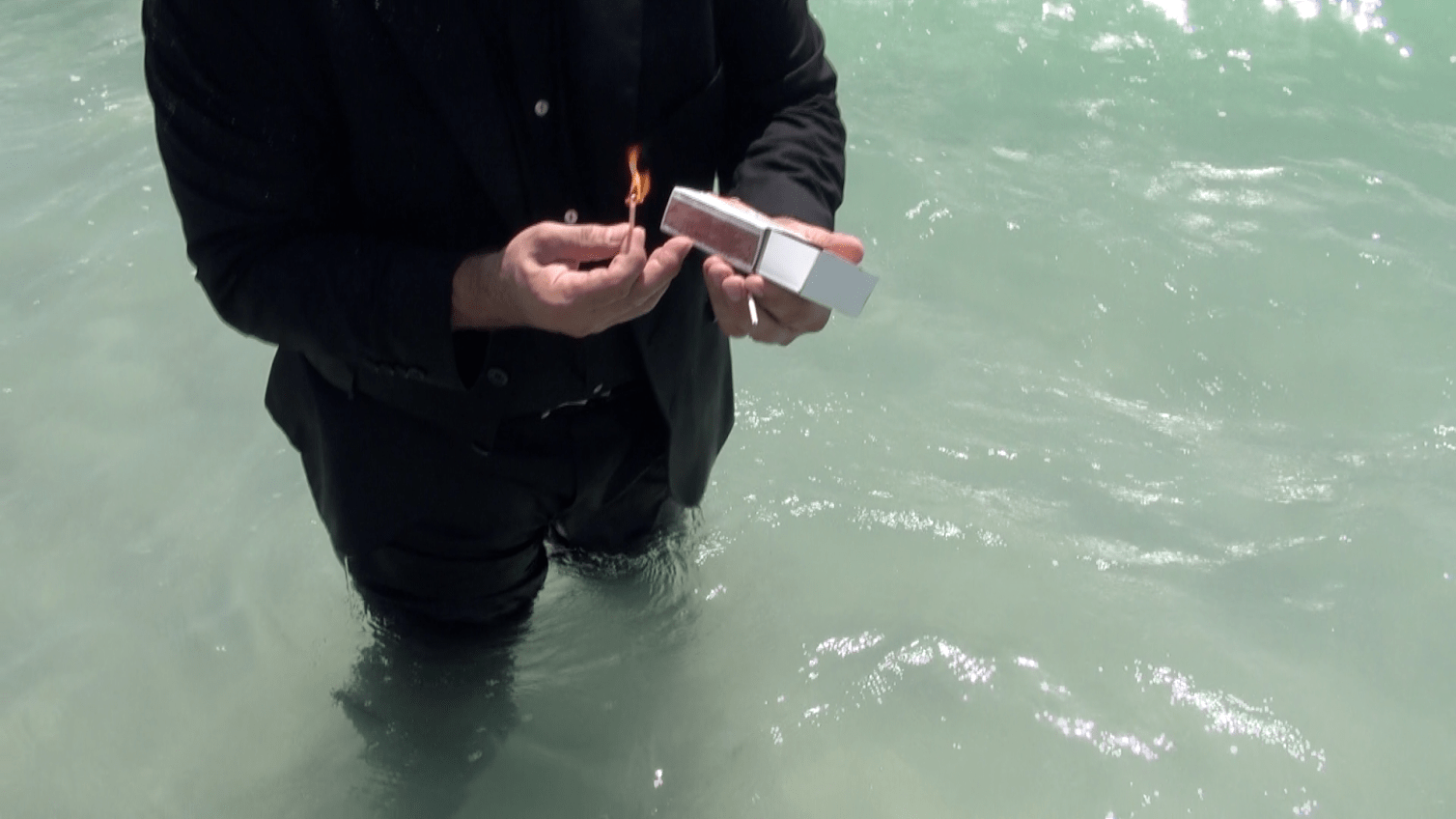Home » CLIMA Artist’s Statement

Xavier Cortada, “5 Actions to Stop Rising Seas: Burn it!,” video screen shot, 2015.
In acknowledgement of the support from the Rauschenberg Residency/Robert Rauschenberg Foundation.
While Paris talks…
The sixth mass extinction is underway.
Unlike five before, human impact is to blame.
Death. Destruction.
Our pollutants trap heat, change the global climate.
Melting glaciers drown shorelines, alter ecosystems.
Devastation. Despair.
Generations not yet born
ask us to save the species we coevolved with,
rescue each other from ourselves:
Learn to love one another.
Duty. Do.
–Xavier Cortada

Xavier Cortada, “Florida is… Sunshine,” digital art, 2015.
Cortada incorporated images of diatoms in this digital work depicting the sun’s rays. Using a microscope, Cortada captured the diatom images from samples used by scientists at FIU’s Florida Coastal Everglades LTER (Long Term Ecological Research) to study the ecology of the Everglades and sea level rise. Diatoms are water-bound, single-celled symmetrical organisms that harness the power of the sun to create oxygen. They are responsible for generating for 1/3 of the air we breathe. Diatoms are encapsulated in silica. Their glass shells– all that remains from the diatom– are used by scientists today to see what was as they research the environmental issues that will shape our tomorrow. Scientists—and artists—can determine the past salinity of water by examining the shells of diatoms preserved in sedimentary core samples. Each diatom species has a different salinity preference, so changes in the mixture of fresh and sea water (driven by sea level and changes in water management) can be inferred from past diatom remains.

